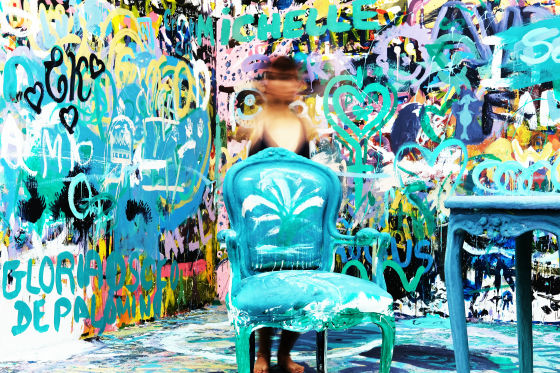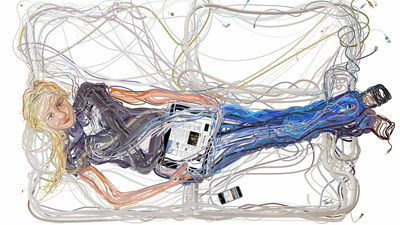Is "lie for genius and madman paper" lie? A warning is sounded in the scientific research of creativity and mood disorders

bySvetlana Pochatun
Van GoghYaVirginia WoolfBecause there are many artists who were suffering from spirit, etc., often by mediaGenius is drawn as a madmanAs a result, even in 2018, creativity andMood disorderIt is widely believed to be related. However, in fact, the research that investigated the relationship between creativity and mood disorders is limited, and it is not scientifically clear whether the relationship between them is relevant. Why is research on the relationship between creativity and mood disorders difficult, Yale University emotional intelligence centerChrista L. TaylorHe explains.
Is there any evidence linking creativity and mood disorders? | Aeon Essays
https://aeon.co/essays/is-there-any-evidence-linking-creativity-and-mood-disorders
First of all, research on the relationship between creativity and mood disorder so far has been mostly described as "Why is there a relationship between the two?" And "Why or how is the relationship between the two?" I am focusing on that. As genius and madman tend to grasp as if it is a single piece of paper, "It is the present situation that" There is a relationship between the two in the first place? There is a fundamental problem that both creative and mood disorders are very difficult to measure objectively.
For example, in general, the term creativity is defined by words such as "original", "unique" or "beneficial", so that researchers can "create creative people" as "those who can make unique and useful things and ideas In addition, we define the creative process as "a spiritual process in which creative things and ideas are created". However, these are not directly measurable, so researchers will create indicators and measure the subject's creativity using indicators.

byAlice Achterhof
However, creativity is very complex, and there are limitations to objectively measure. Even those who are creative to writing poetry can not say the same in the science field. For this reason, even though we can say that "a certain kind of mood disorder is related to specific creativity," it is necessary to be cautious about evaluating creativity in other fields and creativity in general.
Also, mood disorder is difficult to identify and it can not be measured directly. Mood disorders are judged from depression, hypomania, manic episodes, but episodes of depressionMajor depressive disorderSome people will be diagnosed and depressed episodes combined with episodes of manicBipolar disorderSome people are diagnosed as having it.
Studies on creativity and mood disorder made so far are roughly divided into "Comparison of symptoms of mood disorders exhibited by creative people or non creative people" "Mood disorders or people who are not mood disorder Comparison of creativity "," Investigation as to whether symptoms of mood disorder are related to creativity "There are three kinds. However, the two things "creative people tend to be mood disorders" and "they become more creative if they become mood disorders" are similar. These studies are likely to lead to erroneous results in this regard.
In order to clarify the relationship between them, Mr. Taylor conducted a meta-analysis on each of the above three categories research conducted in the past. Then, as expected, in the meta-analysis of the meta-analysis of "Comparing symptoms of mood disorders exhibited by creative people or non-creative people" and "Meta-analysis of creativity presented by people who are not mood disorders or mood disorders" Different results were shown. In the former, the symptoms of various mood disorders were clearly seen compared to those who were not creative, but the latter said that there was hardly any difference between the groups.
Of course, since the meta-analysis is based on research done in the past, there is a methodological limit. If the research that used to be a meta-analysis is biased, the results of the meta-analysis will also be affected by bias.
For example, some researches on the relationship between creativity and mood disorders use "what is on creative work" as an indicator of creativity? This research examined the census and medical records and investigated the number of "those who have had a job who is regarded as a creative among those who are mood disorders". As a result of the survey, it was shown that there are many people who are bipolar disorder for those who are in creative occupation, but is it synonymous with personal creativity to be attached to "creative occupation" such as art relations It is where the doubts remain.

byJacqueline Day
There is also research to investigate whether it was a mood disorder or a mental disorder from the biographies of historically creatived people and historical records. However, the method of checking for the presence or absence of a mental disorder from the record is greatly influenced by the historical background. Depending on the age, being a mood and having no reason is regarded positively as a sign of "genius", such behavior is performed as a performance showing talent, it is possible to be described in a biography It is said that there is also sex. Therefore, we can not know from the literature whether the past artist was really feeling disorder by modern day. In addition, those who sent sensational lives are biased because more biographies are written and recorded. The biography project of Bud Shank which succeeded as a saxophonist is known that many biographers were settled as "weak parts of color".
And there is also a problem that it is difficult to simply diagnose past persons. Van Gogh is generally said to be a bipolar disorder, but on the other hand, schizophrenia, epilepsy · syphilis ·Meniere's disease·Collapse· Some researchers claim that they were lead poisoning. In the event held at the Van Gogh Museum in Amsterdam in 2017, it is said that doctors and art historians did not agree on the cause of Van Gogh's suffering.

byРуслан Гамзалиев
Also, research on the relationship between creativity and mood disorders,Random samplingYaDouble blind methodWe often do not take such a technique. "Creative people" who are subjects in the research are successful writers and artists, while on average "non creative people" average neighborhood residents are selected as subjects. However, the creative person here has a lot of stress due to being exposed to the public's eyes, while those who are not creative have no such stress. Because stress is one of the major causes of mood disorder, it is possible that "stress" may cause mood disorder rather than "whether it is creative or not."
In addition, while creative people tend to remember how their creativity was affected when they suffered from mood disorders, it is said that the general population is hard to recallRecall biasYou can also think.
Psychological research takes a lot of time and resources, and perfect research does not exist. However, Mr. Taylor says that it is difficult to use scientific methods on this topic, and that the conclusions of the study will be influenced by it.
A meta-analysis showed that creative people are suffering from the symptoms of many mood disorders, which means that creative people are not accepting adequate support to stay healthy I will. Remember that the stereotype "Creative people are sick" is dangerous for people with mood disorder and for creative people. By thinking that 'creativity is lost by treatment of mood disorder', there is even the possibility that therapy will not be accepted. Mr. Taylor called attention to the relationship between creativity and mood disorders, which requires careful and careful investigation without bias.

byAlejandro Alvarez
Related Posts:
in Science, Posted by darkhorse_log







